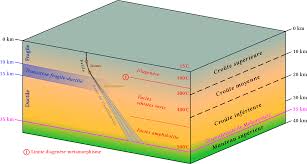The Earth's Continental Crust is a fascinating and diverse component of our planet's geology.
Divided into two major types, continental and oceanic crust, these layers play a crucial role in shaping our planet's landscape and supporting life.
In this blog post, we will embark on an exploration of the continental crust, uncovering its composition, formation, and significance in the geological framework.
Definition and Composition: The continental crust is the outermost layer of the Earth's solid surface, primarily composed of igneous, sedimentary, and metamorphic rocks. Unlike the denser oceanic crust, the continental crust is generally thicker, less dense, and richer in granite and sedimentary formations.
Formation and Evolution: The formation of continental crust is a complex process that occurs over billions of years through various geological events. One of the primary mechanisms responsible for the creation of continental crust is called plate tectonics. Continents are built and modified through processes like volcanic activity, mountain building (orogenesis), and the accretion of terranes.

Craton and Shield Regions: Within the continental crust, there are ancient and stable regions known as cratons and shields. Cratons are the oldest and most geologically stable parts of the continents, often characterized by extensive exposures of Precambrian rocks. Shields, on the other hand, are large, flat areas of exposed crystalline rocks that constitute the cores of continents.
Continental Rifts: Continental rifts represent another significant aspect of the continental crust. These are areas where the crust is being pulled apart, leading to the formation of rift valleys and the potential birth of new ocean basins. The East African Rift System and the Mid-Atlantic Ridge are prominent examples of continental rifts.
Economic Significance: The continental crust is of immense economic importance due to its mineral and energy resources. Many valuable minerals, including gold, copper, coal, and oil, are primarily extracted from continental crust regions. Understanding the geology and composition of the continental crust is vital for identifying and exploiting these resources sustainably.
Earthquakes and Volcanoes: Continental crustal regions are also associated with seismic and volcanic activities. The collision and subduction of tectonic plates can lead to the formation of mountain ranges, such as the Himalayas or the Andes, accompanied by frequent earthquakes. Volcanic activity in continental crust areas results in the creation of volcanic landforms and the release of gases and magma.
The continental crust is a dynamic and complex layer of the Earth's crust, characterized by its composition, formation, and diverse geological processes. Its significance extends beyond geological curiosity, as it provides valuable resources, supports habitats, and shapes the Earth's topography. By unraveling the mysteries of the continental crust, scientists can gain deeper insights into our planet's past, present, and future. Google Search Engine
Visit Official Home Page




0 Comments